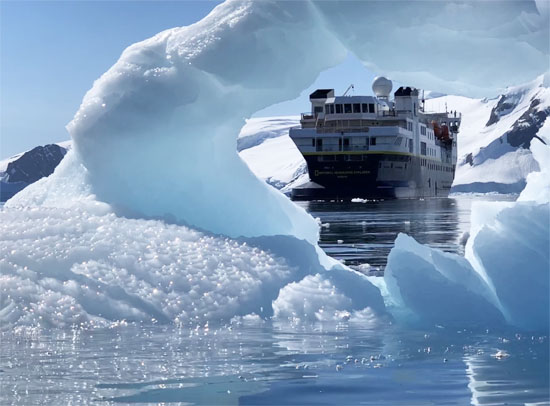On our way to Antarctica, we stopped into Buenos Aires, Argentina. Lynn prearranged a tango lesson . It’s Argentina — why not? We had been traveling for over 20 hours and got a chance to tour Buenos Aires, it’s a vibrant South American city — more about that later.
Our tango lesson started at 8:30 p.m. Imagine having very little sleep in the past 24 hours and you have to muster the energy for a dance lesson. She had booked a private lesson so it was just us and our 2 instructors. We videoed their fancy footwork, check them out:
Once we started taking lessons, we were re-energized and forgot that we were running on fumes. After our 1 hour private lesson, our instructors took us to 2 different Milongas (tango dance clubs). The first Milonga was more formal and absolutely crowded.
Men sat at tables on one side of the room while ladies sat at tables on the other side. To get a dance partner, a man stares at a woman across the room and if she nods, she is accepting his request for a dance. It’s not a pickup thing — they just love to tango! You would see young men dancing with older women and vice versa.
After dancing at the first club, our instructors told us about a totally different type of Milonga. It was for a younger crowd and was as much about young people hanging out socially than tango. But the dance floor was big and the place had a really hip vibe. Lynn danced with our instructor and they were amazing together. The club is called La Catedral:

Earlier in the day, we toured Buenos Aires starting at Casa Rosada — a government building in one of their famous squares:

The square was bustling with a band playing and Brazilian ladies in native dress.

Our next stop was Caminito (“little walkway” or “little path” in Spanish). This place acquired cultural significance because it inspired the music for the famous tango “Caminito” (1926), composed by Juan de Dios Filiberto.


After a bit of walking, we found a nice little watering hole called La Peru Caminito where we sampled local beer.


We ended our tour at Recoleta Cemetery, in the upscale Recoleta Barrio of Buenos Aires.
The cemetery includes graves of some of the most influential and important Argentinians, including several presidents, scientists, and wealthy characters.
Internationally, Eva Perón is the best-known person buried in this cemetery. There’s also the tomb of Rufina Cambacérès who was buried alive.

The thing I found most interesting is that many of the mausoleums have glass where you can see the caskets inside. Odd.

After touring Buenos Aires and dancing Tango until 1 a.m. – we started our journey to the bottom of Argentina and the city located at the bottom of South America: Ushuaia. We left at first light but were able to catch some z’s on the 3 hour plane ride.

Ushuaia is located in Tierra del Fuego and is normally windy and rainy. We were lucky to arrive to beautiful weather. We visited the Tierra del Fuego National Park, just a few minutes outside of Ushuaia.

The national park has lots of hiking trails so we took time to stretch our legs while enjoying scenic vistas.


We then boarded a catamaran and cruised the Beagle Channel before leaving for Antarctica.


Alas, it was time to make our voyage to Antarctica — check out that blog here.








































